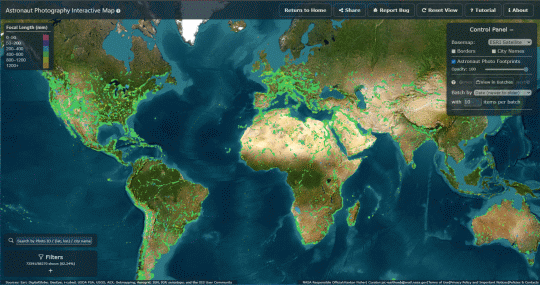ISS059-E-36857
| NASA Photo ID | ISS059-E-36857 |
| Focal Length | 240mm |
| Date taken | 2019.04.29 |
| Time taken | 16:47:09 GMT |
5568 x 3712 pixels 720 x 480 pixels 5568 x 3712 pixels 640 x 427 pixels
Country or Geographic Name: | USA-MONTANA |
Features: | FLATHEAD LAKE, ROCKY MOUNTAIN TRENCH, WILD HORSE ISLAND, FLATHEAD RIVER, MEANDER, SEDIMENT |
| Features Found Using Machine Learning: | |
Cloud Cover Percentage: | 25 (11-25)% |
Sun Elevation Angle: | 44° |
Sun Azimuth: | 125° |
Camera: | Nikon D5 Electronic Still Camera |
Focal Length: | 240mm |
Camera Tilt: | 50 degrees |
Format: | 5568E: 5568 x 3712 pixel CMOS sensor, 35.9 x 23.9 mm, total pixels: 21.33 million, Nikon FX format |
Film Exposure: | |
| Additional Information | |
| Width | Height | Annotated | Cropped | Purpose | Links |
|---|---|---|---|---|---|
| 5568 pixels | 3712 pixels | No | Yes | NASA's Earth Observatory web site | Download Image |
| 720 pixels | 480 pixels | Yes | Yes | NASA's Earth Observatory web site | Download Image |
| 5568 pixels | 3712 pixels | No | No | Download Image | |
| 640 pixels | 427 pixels | No | No | Download Image |
An astronaut aboard the International Space Station (ISS) aimed a camera towards the Rocky Mountains to capture this image of Flathead Lake. The lake we see today on the western edge of Flathead National Forest is a remnant of Glacial Lake Missoula.
Flathead is located within a depression known as the Rocky Mountain Trench, and it is one of the largest freshwater lakes west of the Mississippi River in the continental United States. The lighter-toned parts of the lake are due to the inflow of sediment from seasonal snow melt. The meandering Flathead River, which flows south into the lake, has created multiple sloughs (also known as oxbows) along its course.
For hundreds to thousands of years, the Salish, Kootenai, and Pend d'Oreille tribes have hunted, foraged, and fished on land now included within the Flathead Indian Reservation. Today cherry orchards line Flathead Lake and they are irrigated by water from the basin. These orchards, along with others in surrounding cities, contribute to an annual sweet cherry production of 4 million pounds.
Native and migratory birds like the bald eagle, the Canada goose, terns, and sandhill cranes use the islands, shorelines, and surrounding uplands of Flathead Lake as overwintering and breeding grounds. Wild Horse Island, the largest in the lake, was reportedly once used by the Kootenai tribe to hide horses in order to protect them from enemies.




